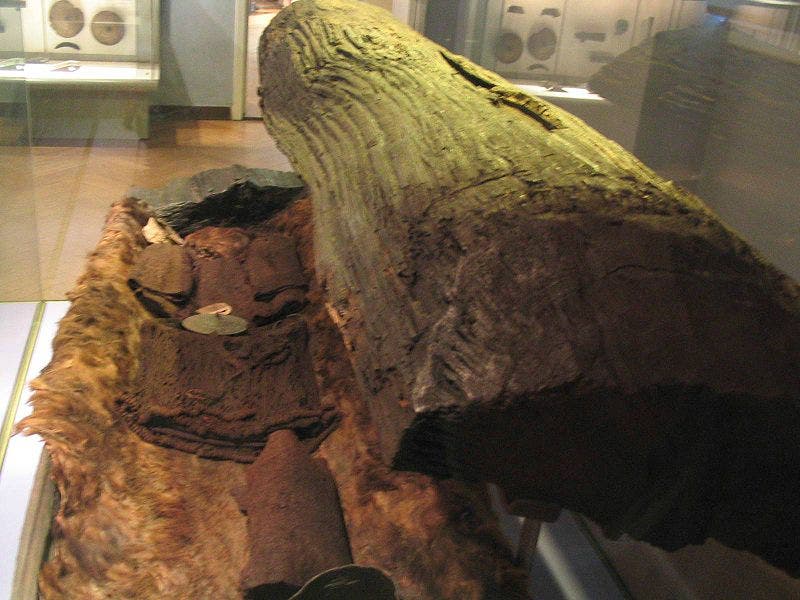In 1921, archaeologists found the remains of a Bronze Age priestess, dubbed the Egtved Girl. Now, a new study reveals that the priestess, who was found in Denmark, likely traveled hundreds of kilometers and was born somewhere in Germany.
The Egtved Girl was, according to all clues, an extraordinary person. She only lived to be 16-18. She was slim, 160 cm tall (about 5 ft 3 in), had short, blond hair and well-trimmed nails; her remains were found alongside the cremated remains of a child in a barrow, buried in 1370 BC. Now, isotopic analysis has revealed another remarkable fact about her – she seems to have traveled a lot throughout Europe, and was likely buried far away from her birth place. Even isotopes in the wool from the ancient girl’s clothing, the blanket that was used to cover her originated form outside Denmark.
Researchers used strontium analysis, an element found in bedrock throughout the world. Living creatures and plants absorb this element through food and water. What makes strontium isotope analysis especially interesting for archaeologists is that the parts of the human body where the isotopes collect–tooth enamel and bone–are formed at different stages of a person’s life. So if you see different strontium ratios in enamel or bone formed at different stages, you know that the person you’re analyzing traveled quite a lot. Furthermore, to an extent, you can infer where he or she traveled.
“I have [analyzed] the strontium isotopic signatures of the enamel from one of the Egtved Girl’s first molars, which was fully formed/crystallized when she was three or four years old, and the analysis tells us that she was born and lived her first years in a region that is geologically older than and different from the peninsula of Jutland in Denmark,” said Karin Margarita Frei, from the National Museum of Denmark and Centre for Textile Research at the University of Copenhagen.
The results showed that the girl was likely born in the Black Forest, in southern Germany, which is consistent with some theories that Denmark and Germany had commercial connections all the way back in the Bronze Age. Denmark commonly traded amber for bronze, with Germany serving as a middle man.
“Amber was the engine of Bronze Age economy, and in order to keep the trade routes going, powerful families would forge alliances by giving their daughters in marriage to each other and letting their sons be raised by each other as a kind of security,” said professor Kristian Kristiansen from the University of Gothenburg.
As for what the Egtved Girl’s role was, it was likely quite important. Archaeologists believe she basically served as a contract, tying two powerful families together. Sadly though, her fate wasn’t so fortunate.
“We find many direct connections between the two (regions) in the archaeological evidence,” said Cristiansen. “My guess is that the Egtved Girl was a southern German girl who was given in marriage to a man in Jutland so as to forge an alliance between two powerful families.”










